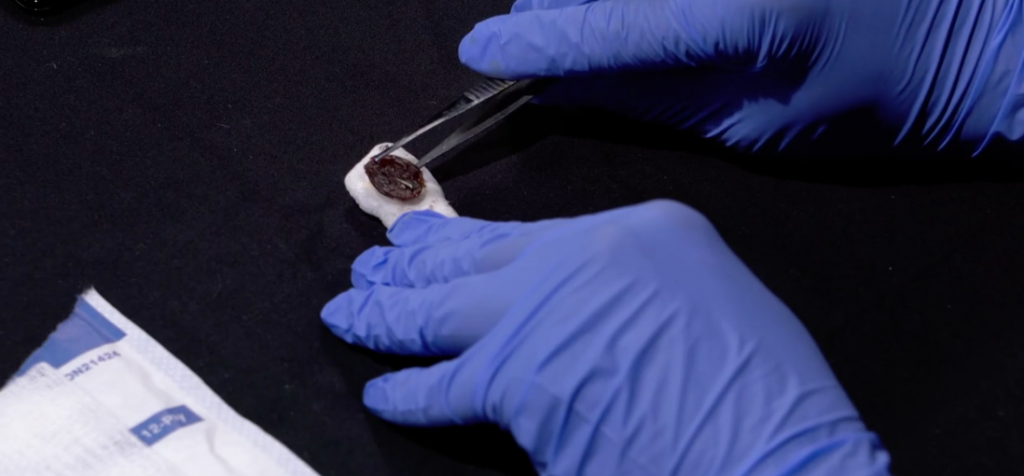Cases of Rocky Mountain spotted fever have been increasing in recent years and Lyme disease has been showing up in more parts of the Northeast and Midwest.
This short guide to the diagnosis of each, along with a link to a video of tick-removal technique, was taken from two cases studies that can be found here.
Rocky Mountain spotted fever
The rash associated with Rocky Mountain spotted fever (RMSF) typically begins as small, blanching, erythematous macules on the extremities, sometimes including the palms and soles, and can spread to the trunk. The NP should carefully examine the rash, noting the color, whether there is blanching, any apparent pattern or tenderness over the area, and any exudate.
The NP should also include an abdominal exam, noting any tenderness or masses in the abdominal area. A neurologic exam should be included, as this system is commonly affected in RMSF. During the head, eyes, ears, nose, and throat exam, the NP should pay careful attention to the eyes, looking for conjunctival injection, and should ask about light intolerance.
The diagnosis of RMSF is usually based on clinical signs and symptoms and history suggesting possible tick exposure. Antibiotic therapy should be started immediately if RMSF is suspected and not delayed while waiting for laboratory confirmation.
The two most commonly used tests for RMSF include indirect fluorescent antibody (IFA) testing on a skin biopsy from the area of a skin lesion or an IFA test from blood drawn within the first week of the onset of symptoms and again 2 to 3 weeks later.
Lyme disease
The NP should perform a thorough skin assessment, searching for an attached tick, any additional lesions, and regional lymphadenopathy. It is also important to inspect for a retained tick limb embedded in the patient’s skin. The NP should assess the rash for blanching, diameter, tenderness, and warmth. Typically, in Lyme disease, the rash will appear as a “bull’s eye” pattern, also known as erythema migrans (EM) rash. The EM rash usually is warm but not tender. Many cases of Lyme disease, however, do not present with EM, or sometimes they can have rashes that resemble other diseases. EM should be at least 5 cm in diameter to meet the criteria for Lyme disease.
The NP will need to assess for any other associated symptoms, such as headache, nausea, fever, or neurologic deficits. In the early localized stage of Lyme disease, the patient may have only minor constitutional symptoms. The patient may not realize or remember possible associated symptoms until asked.
The NP should use the two-step method for diagnosis, the first step being an enzyme immunoassay test from a blood sample. The second step is a Western blot, performed if the first step is positive. However, there is some debate over whether testing is necessary if clinical presentation suggests Lyme disease.
Tick removal
The complete removal of the tick itself, if found, is imperative to the effectiveness of the management plan. This video is a simulated step-by-step guide to tick removal.

